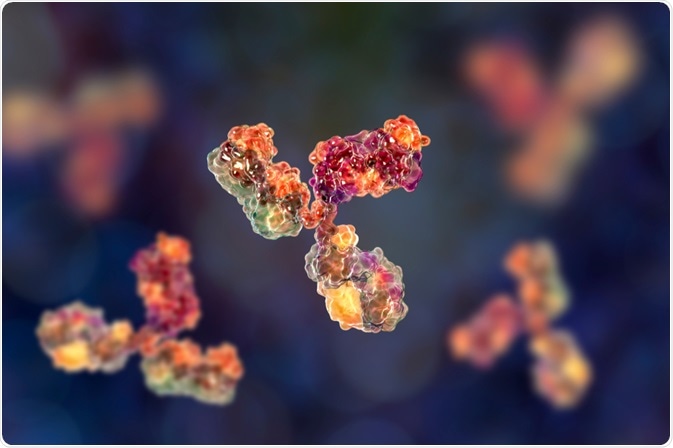Ion exchange chromatography (IEC) is a chromatographic method used to separate biological compounds. The basis of separation in IEC is reversible adsorption (surface absorption) of charged molecules onto a stationary phase.
 Image Credit: Kateryna Kon/Shutterstock.com
Image Credit: Kateryna Kon/Shutterstock.com
The stationary phase is made of immobilized ion exchange groups that have the opposite charge as the target component that is to be carried in the mobile phase. Generally, ion exchange experiments are performed in five stages.
What is IEC and how is it performed?
The first stage of IEC is called equilibration. During this process, the ion exchange stationary phase is equilibrated to ensure that it is operating at the optimized pH and ionic strength conditions to maximize adsorption of the target polar component of the stationary phase.
The exchange surface is a resin that comprises a matrix of charged ionizable functional groups or ligands. This stationary phase displays these functional groups that form ionic interactions with the analyte ion of opposing charge. It is important to maintain electroneutrality, which is the state in which the net charge of the system is zero. Counterions are present in the equilibration solution.
In the second stage, the target polar analyte present in the mobile sample phase must compete with counterions for adsorption to the mobile phase. This process results in counterion displacement; any components that are unable to bind pass through the column and are immediately eluted.
In the third phase, the desorption of the bound analytes occurs. This is achieved by altering the binding conditions, principally by changing the pH or increasing the ionic strength of the elution buffer.
In the latter method, an elution buffer of increasing salt concentration is applied to the column and analytes are released from the resin in order of increasing binding strength. This occurs because the counterion concentration increases and competes with the bound analytes. The poorly binding analytes are released first, whereas those analytes capable of strong ionic bonding are eluted last.
The fourth stage is categorized by the end of desorption, and in the fifth and final stage, the column is regenerated. Regeneration resets the column so it can be used for another purification.
Separation of polar analytes within a complex mixture is possible because their differences in net charge, charge density, and charge distribution allows for differential interaction with the stationary ion exchange surface. The dynamics of their interaction with the ion exchange surface can be manipulated by varying the ionic strength and pH of the mobile phase during elution.
The charge properties of biological molecules are notable; ion exchange chromatography is advantageous when separating proteins, as it provides high-resolution separation between proteins that differ only by a single amino acid.
IEC-based antibody separation
There are several chromatographic processes that facilitate the isolation of antibodies by taking advantage of different biochemical properties. Separation based on size, hydrophobicity, solubility, and binding affinity are examples that have been used. Importantly, the various charge properties of antibodies make them amenable to purification by IEC;
Antibodies are proteinaceous biological molecules, and their charge proteins can be manipulated using IEC. The net charge of the molecule(s) of interest determines the type of IEC that can be used. If positively charged compounds are the target to be captured by the mobile phase, a cation exchange resin is chosen. Conversely, a positively charged anion exchange resin is selected when negatively charged molecules are to be immobilized.
The most common resins used in antibody purification protocols are Protein A agarose beads. There are a variety of other commercially available resins that may be used, however. The binding capacity of the resin, together with the length of the column, determines the number of cycles of IEC that must be undertaken to process the antibodies that are yielded from the supernatant of cells engineered to express high quantities of the desired antibody.
Cation exchange resins have been reported to produce high yields and reduce the quantity of host cell protein (HCP); HCPs are process-related impurities that are derived from the host cell from the expression of recombinant, biotherapeutic proteins, such as antibodies. Additionally, the process is highly selective, such that binding is specific to the constant region of antibodies.
Antibodies are becoming increasingly prevalent as therapeutic agents in the treatment of various diseases like arthritis and cancer. Consequently, the market value of antibodies is increasing. Monoclonal antibodies (MAb) are produced by mammalian cells and possess the same structure. The purity of these clonal populations is essential for clinical efficacy.
MAb titers are typically as high as 5 to 10 g/L, but their downstream purification creates a bottleneck in their final production. IEC provides a method by which antibodies can be purified with high yield and selectivity.
Further Reading